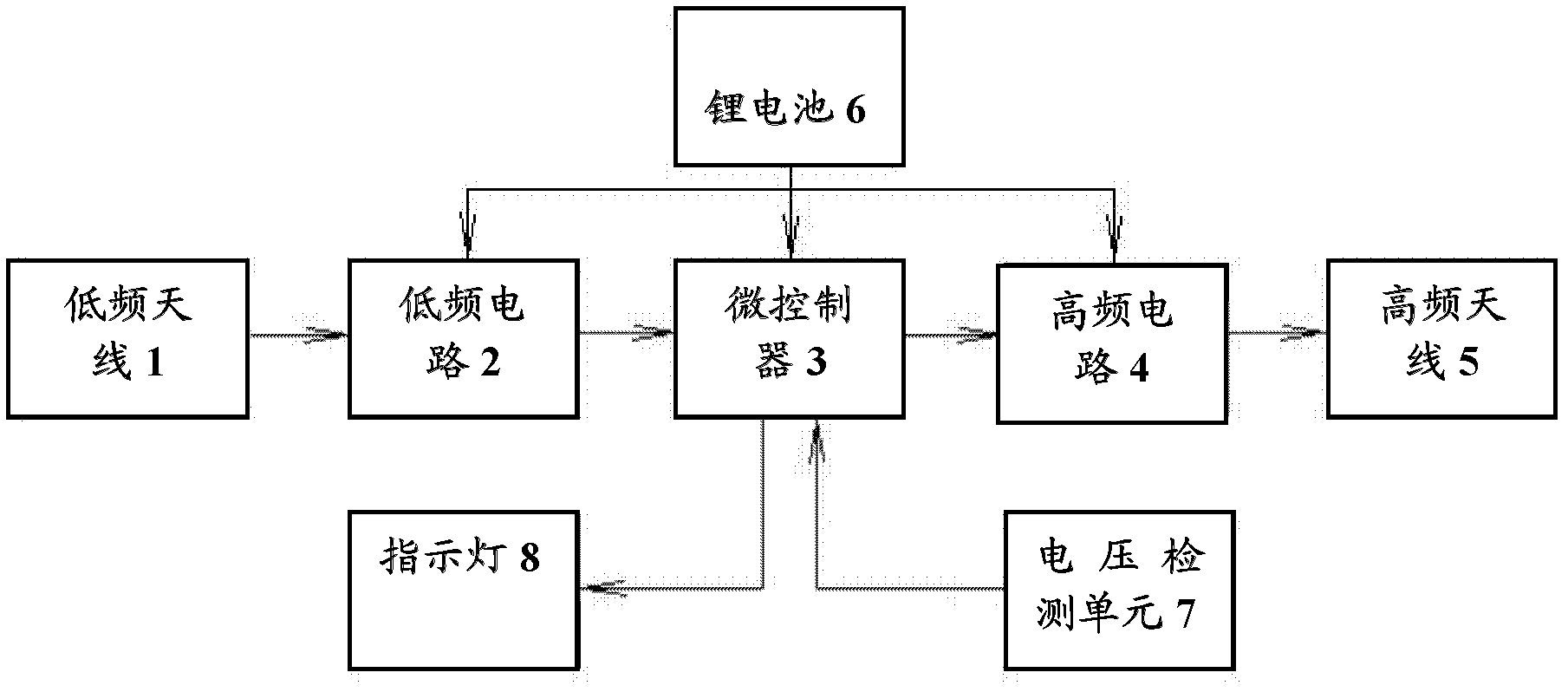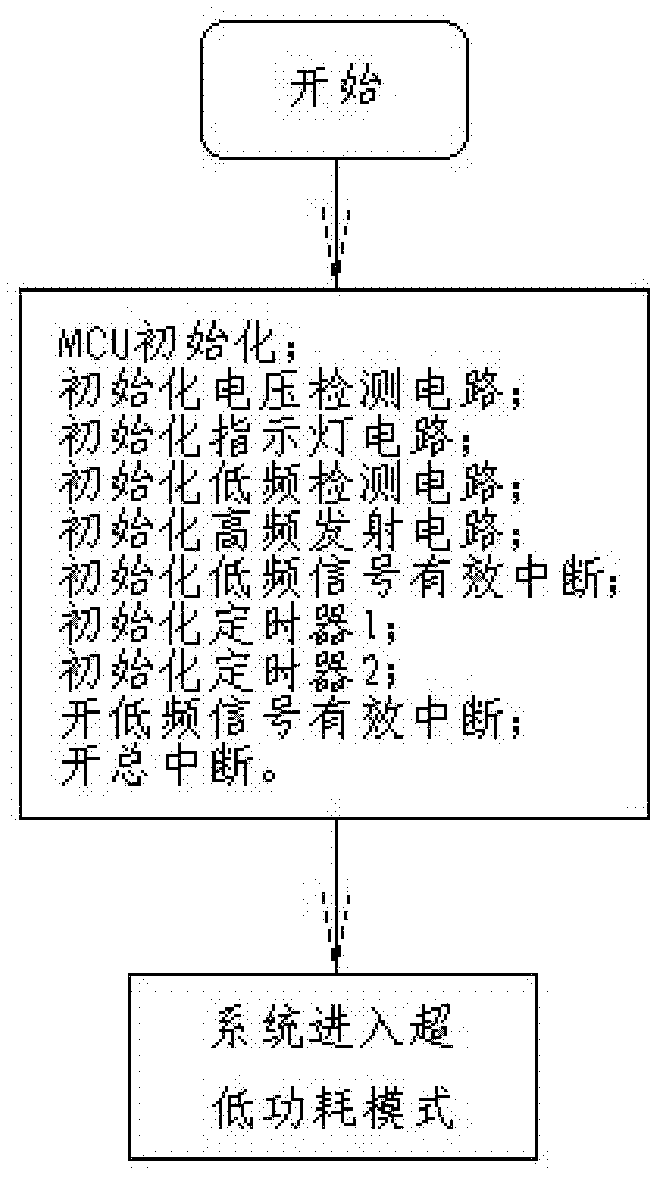Dual-frequency radio frequency electronic tag
A technology of electronic tags and radio frequency, which is applied in the direction of recording carriers used in machines, instruments, computer components, etc., and can solve the problem of inability to accurately distinguish which card reader is used by multiple card readers, short battery life, and high power consumption of electronic tags. problem, to achieve the effect of reducing design cost, simple circuit, and easy promotion and application
- Summary
- Abstract
- Description
- Claims
- Application Information
AI Technical Summary
Problems solved by technology
Method used
Image
Examples
Embodiment
[0036] Embodiment: a dual-frequency radio frequency electronic tag, including:
[0037] The low-frequency antenna 1 is used to receive the low-frequency signal from the activation source and generate an induction signal containing the signal source code. The low-frequency antenna can be a one-dimensional antenna or a 3D antenna. The one-dimensional antenna can achieve a directional effect and reduce other Directional signal interference, 3D antenna is not restricted by direction, it is more convenient to use;
[0038] The low-frequency circuit 2 generates a low-frequency information signal according to the induction signal from the low-frequency antenna 1;
[0039] The high-frequency circuit 4 is used to modulate the intensity identification signal, the signal source code and the electronic tag ID number from the microcontroller 3 into an encoded signal;
[0040] The high-frequency antenna 5 is used to transmit the coded signal into the space through the high-frequency carrier. The hi...
PUM
 Login to View More
Login to View More Abstract
Description
Claims
Application Information
 Login to View More
Login to View More - R&D
- Intellectual Property
- Life Sciences
- Materials
- Tech Scout
- Unparalleled Data Quality
- Higher Quality Content
- 60% Fewer Hallucinations
Browse by: Latest US Patents, China's latest patents, Technical Efficacy Thesaurus, Application Domain, Technology Topic, Popular Technical Reports.
© 2025 PatSnap. All rights reserved.Legal|Privacy policy|Modern Slavery Act Transparency Statement|Sitemap|About US| Contact US: help@patsnap.com



